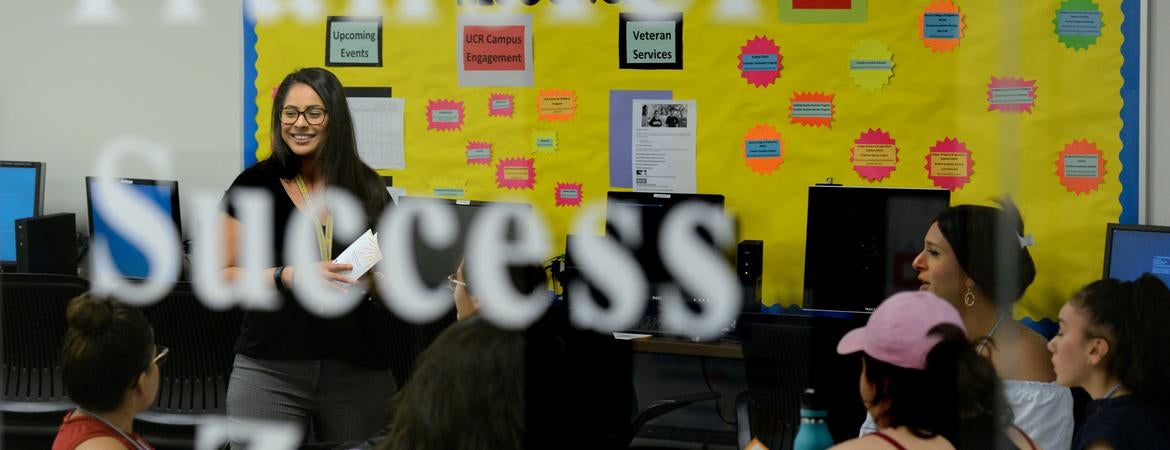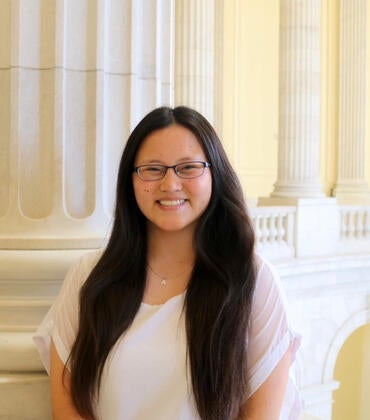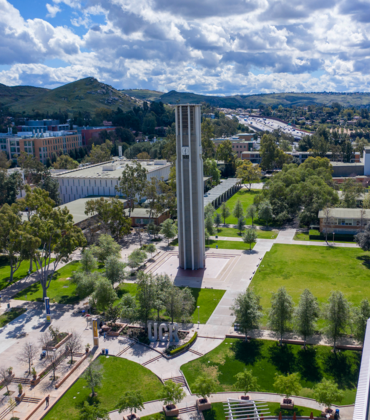
Early 2017 was a nervous time on the UC Riverside campus.
In 2015, California Gov. Jerry Brown negotiated with the University of California system a target of enrolling one new transfer student for every two new freshmen enrolled. By spring 2017, the governor put teeth in the mandate: he would withhold $50 million from the UC system unless UCR and UC Santa Cruz met the goal within one academic year. UC Riverside was then well outside that ratio, with 4.46 freshmen admitted for every transfer student.
Eighteen months later, UCR has overhauled its transfer recruitment plan, and few are more pleasantly surprised by the results than those responsible for the feat.
If the fall 2017 mandate had held, the fallout for students and the campus might have been catastrophic; in the words of Undergraduate Admissions Director Emily D. Engelschall: “The mother of all unintended consequences.”
It would have meant a 20 percent reduction in freshmen admissions at UCR, and — over 10 years — a loss of $500 million in revenue.
“If we had been compelled to do it in a year — using simple math — the easiest way would have been to put some effort into growing the transfer population, and massively reduce our freshman enrollment target,” Engelschall said. “It could quickly get you there, but it would not have met the goals of the state, and it would have negatively impacted California high-school students.”
UCR rallied its support base, including donors and its legislative delegation. Gov. Brown and the state budget office relented on the one-year deadline. Demonstrate a good-faith effort, the state said, and we’ll release the $50 million.
Some challenges were felt to be unique to UCR. Most of its transfers historically come from local community colleges. There are many adult learners in Riverside County community colleges, as well as vocational students who don’t have their sights on a four-year degree.
“This was a very aggressive goal,” Engelschall said. “At the outset, many felt it was insurmountable.”
A Campuswide Task Force was formed, chaired by Thomas Smith, dean of the Graduate School of Education. The group included representatives from admissions, financial aid, the career center, as well as the colleges and faculty Senate. Nineteen separate action plans were developed by a secondary task force, which included visiting all 114 California community colleges, and building new relationships with community college campuses. Some academic barriers were addressed: for example, a calculus requirement presented an obstacle for many STEM transfers. Marketing efforts were evaluated through the lens of transfer students, and greater opportunities for on-campus visits by transfers were developed.
“One of the things I’m most proud of is how the whole campus came together to tackle the challenge of increasing our transfer student enrollment,” Provost Cynthia K. Larive said.
“People didn’t close doors,” Engelschall said. “Everyone was willing to think creatively; nothing was off the table.”
While UCR had to adjust transfer admissions requirements, an ongoing challenge was how to increase the transfer numbers while ensuring transfer students are successful at UCR.
An answer was the creation of a transfer student-specific support system: The Transfer Success Zone. The Transfer Zone opened in January 2018, and it’s something more than a concept; it’s a physical space, near the student HUB, in the Surge building.
The zone includes dry-erase work tables and bulletin boards with resource information. Workshops have been hosted on topics including the transition from community college to university; financial aid; health and wellness; resume building; and the UCDC program. Peer mentors visit; mixers are held.
Nina Cerna, coordinator of Transfer Success Programs, said more than 400 transfer students regularly make use of the facility. Prior to their arrival this fall, transfer students received postcards and emails inviting them to visit the Transfer Success Zone, and an open house took place on Oct. 3.
“If they don’t feel a connection across campus, they have a home here,” Cerna said.
For fall 2018, the freshmen-to-transfer ratio is expected to be 2.58-to-1. By winter 2019, it’s expected UCR will be at 2.25:1.
In May 2018, the state acknowledged the progress of UC Riverside and UC Santa Cruz, and released the $50 million.
In retrospect, Provost Cynthia K. Larive said, the pressing mandate was tough-but-good medicine: “It’s good we were called out; it’s good our feet were held to the fire.”
“There were a lot of myths that grounded our thinking about transfer students,” Larive said. “What we learned, in part, is that we had put barriers in place that kept transfer students from coming.”
While there’s much to celebrate in the achievement, Engelschall said there is no time to pause.
“We threw in everything — and the kitchen sink — to increase our transfer student enrollment,” Engelschall said. “Our challenge in the coming years will be to keep the momentum going.”



